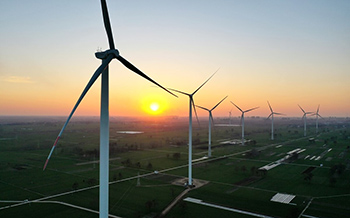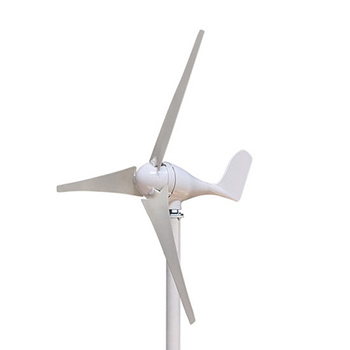Regular maintenance of wind turbines is an important part of ensuring their efficient, safe, and stable operation. The main purpose of regular maintenance is to prevent failures. It can extend the life of the equipment, improve power generation efficiency, and ensure that the wind turbines meet safety standards and environmental protection requirements during operation. The following is a detailed explanation of the regular maintenance of wind turbines.
Regular maintenance
Regular maintenance refers to the regular inspection, maintenance, and maintenance of the wind turbine according to the technical requirements of the wind turbine and the operating time.
Generally, the regular inspection plan is formulated according to the running time, such as three months, six months, one year... The content of the regular inspection work is relatively fixed, and there are generally relatively standard procedures and requirements.
Each unit needs about 80 hours for each scheduled inspection. (The time varies according to the requirements of different units and the frequency of regular inspections). One engineer can lead several skilled workers to participate. Due to the great amount of regular inspection equipment and the heavy workload, there are certain requirements for the physical strength of the personnel. Some work (such as connection bolt torque inspection) has safety risks, and certain safety training is required.
The operating environment of the wind turbine is relatively harsh, and regular inspection can keep the equipment in the best state and prolong the service life of the wind turbine, so this work is very important. Depending on the different times, the work content also varies.
Regular inspection mainly includes torque inspection of connectors (including connection), lubrication performance inspection, component function test, oil level and electrical equipment inspection, equipment cleaning, etc. The technical requirements are not strict.
Replacement of major components and overhaul of specific components
The replacement of large parts mainly includes the replacement of large equipment such as blades, gearboxes, motors, and electric control cabinets. Generally, large and professional equipment is required, and the specific work needs to be carried out by companies and professionals with relevant qualifications, such as installation qualifications, cable operators, etc.
At present, most of the work in this area is undertaken by professional companies. The replacement of large components in wind power equipment is often expensive, but the probability of large equipment needing to be replaced is relatively low. At present, most operation and maintenance companies and manufacturers do not have, nor do they need, the technology and personnel in this area. Only a few people who are familiar with wind turbines and understand the work are required to participate in the guidance.
Overhaul of specific components
The overhaul of specific components mainly refers to the overhaul of some integrated or specialized components, such as blades, gearboxes, motors, etc. These are modular, integrated components that are often overhauled by the component manufacturer, requiring professionals and equipment. At present, neither wind turbine equipment manufacturers nor wind turbine operating companies are directly involved in this work.
Two aspects of regular maintenance
The following is a detailed introduction to the two aspects of regular maintenance.
Impeller
The impeller consists of blades and a hub. The impeller has a diameter of 77 meters and a total of three blades. The blades are made of fiberglass. Each piece weighs 6 tons.
Inspection content, quality requirements, and processing methods:
- The blade surface and edges should be free of cracks, damage, and cracks.
- Check whether the initial installation angle of the wind turbine blade has changed.
- Visually inspect the blade bearing gear and seal.
- Check the surface of the hub for corrosion, cracks, spalling, wear, and deformation.
- Check and tighten all bolts within the installation range according to the torque table.
- Check the pitch bearing grease.
- Check the oil level of the pitch gearbox to see if there is any leakage.
- Check whether the pitch motor carbon brushes and fans are abnormal.
- Check whether the impeller grounding system is normal.
NOTE: The impeller must be locked during inspection.
Spindle
Inspection content, quality requirements, and processing methods:
- Check whether the main shaft components are damaged, worn, or corroded and whether the bolts are loose or cracked.
- Check the spindle for abnormal sounds.
- Check the shaft seal for leakage and the lubrication of the shaft seals at both ends of the bearing.
- Tighten the main shaft bolts, bushings, and machine base bolts according to the torque table.
- Check the cover of the rotating shaft (front end and rear cover).
- Check whether the spindle lubrication system is abnormal and fill in oil as required.
- Check whether the oil level of the oil filling tank is normal.
- Check the connection between the main shaft and the gearbox.
- Check the lightning protection system. Visually inspect the brush and air gap, the minimum length of the brush: 20mm. If necessary, they need to be replaced. Check the contact surface and spring force to ensure a secure fit. Visually inspect the flatness of the front surface of the shrink disk.
